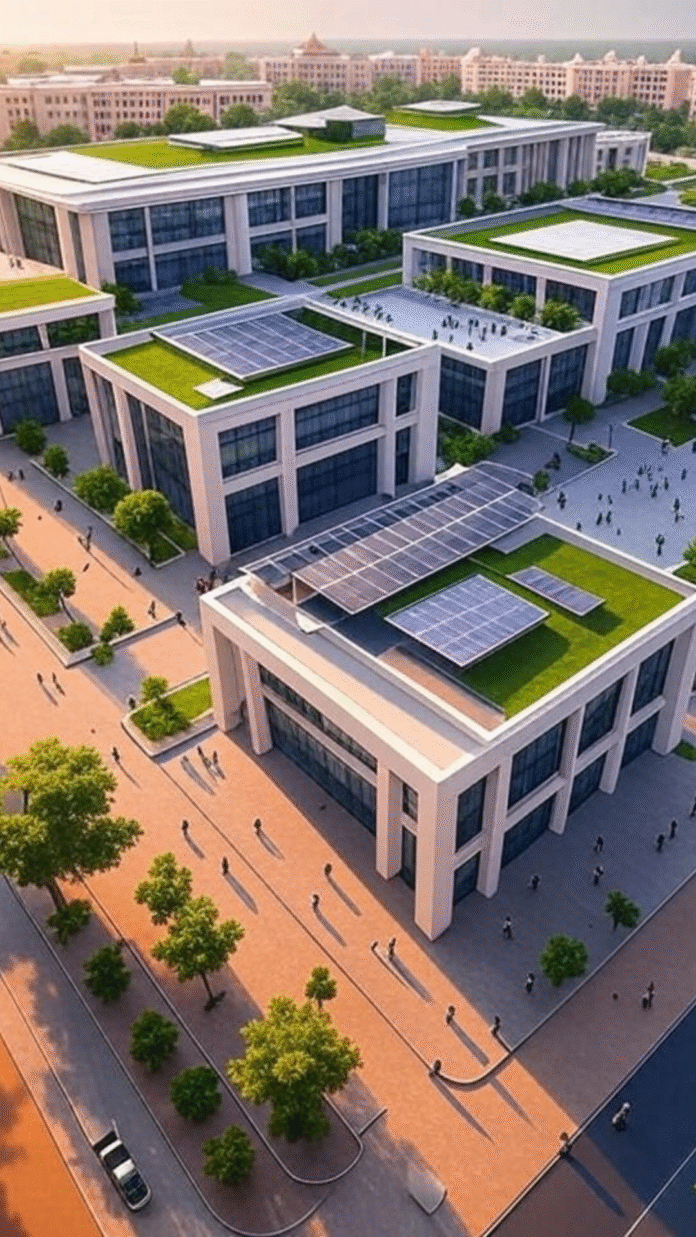“Governments run on papers, people, and places. When places shift, so does the soul of governance.”
India is writing a new chapter in its administrative history as it begins relocating more than 30,000 government employees from the stone-clad, colonial-era buildings of Lutyens’ Delhi to a shimmering, state-of-the-art complex on Kartavya Path—a move unprecedented in both symbolism and scale.
This historic migration, sanctioned through orders issued earlier this month, is not just about physical space. It is a deliberate architectural and ideological statement: the Centre is moving towards a more unified, digital, and future-proof government.
The Move That Repositions Power
The ministries spearheading this transition include some of the most critical organs of the Indian state:
-
The Ministry of Home Affairs, led by Amit Shah
-
The Ministry of Rural Development, under Shivraj Singh Chouhan
They are the first of many to be relocated to Building 3 (CCS-03) — a symbol of New India’s resolve to depart from the trappings of its imperial past and to step boldly into an era of architectural minimalism, operational efficiency, and shared innovation.
Beyond Nostalgia: Lutyens’ Legacy Retired
Since the 1930s, Delhi’s administrative heart has pulsed through the sandstone veins of buildings built by British hands. North Block, South Block, Shastri Bhawan—monuments of a bygone century—have stood as seats of both policy and power.
But in a post-pandemic, digitally connected, AI-augmented world, the old stone no longer breathes with the speed and intelligence required of modern governance. The Central Vista Redevelopment Project, under which this move falls, is not an erasure but a bold update—a much-needed operating system upgrade for the Indian state.
Green, Smart, Centralized: A Blueprint for Governance 2.0
CCS-03, the first among the new generation of Secretariat buildings, is equipped with:
-
Energy-efficient climate control
-
AI-enabled access and security systems
-
Digitally integrated file movement and communication systems
-
Centralized inter-ministerial hubs for seamless collaboration
It is a building not just built with steel and glass—but with purpose.
What This Means for India
For civil servants, this is a shift of environment, hierarchy, and mindset. For the citizens of India, this is a statement that governance is no longer hidden in red tape and dusty files, but emerging into the light of accountability, agility, and clarity.
The Great Bureaucratic Shift is not just a physical relocation—it’s a metaphor for what India hopes to become: faster, fairer, and firmly future-bound.
Mr. Mohan Shukla’s Nostalgic Reflections
Mr. Mohan Shukla, a veteran at the Lutyens circle and Chairman to the Board of Governors at News365 Times, a public policy influencing body and voice of Indians, shares his nostalgic thoughts:
Honestly, I am feeling ‘crestfallen’ to know that these iconic buildings (Bhavans) viz. Udyog Bhawan, Shastri Bhawan and Nirman Bhawan etc., representing old-school colonial structures/charm which have been home to most critical/crucial Government Offices, would be replaced by World-Class and modern buildings, situated in and around Central Vistas – CCS Buildings, now known as Kartavya Path, located in the heart of Lutyens’ Delhi.
Further let me shift the spotlight on Shastri Bhawan, proudly standing over Dr. Rajendra Road, which has been the workplace for 27 different and most important ministries and the authorities of the Central Government. Conjuring up, a bit nostalgically, my 3 decades old and thick associations with this Bhavan, while representing 5 top Indian & Global Corporate Houses – Tata Group & other group companies, Pernod Ricard India (erstwhile Seagram India), Glenmark Pharma, Carrefour Group India & Bharti Group, to name a few, involving continued meetings and interactions with the Best Brains of Bureaucracy, Accomplished Administrators, Top-notch Policy-makers and great Govt Functionaries make me feel proud, pampered and purr too. They had always been equipped with a development-oriented and growth-oriented vision and wisdom. Even now, in the course of my Fractional Leadership Role, I enjoy visiting these Bhawans, teeming with younger officers.
Interestingly and importantly, these Bhawans were perfect and prominent meeting places for professionals connected with Public Policy. Govt. Relations etc. Over and above, these Bhawans were popular rendezvous for Public Policy Professionals to have a light-hearted pow-wow circling around economic matters, to movies etc., side by side, enjoying ‘chai from canteens’ at times, and, coming face to face with market monkeys having free run in those days.
Time and again, New-Gen Public Policy Professionals who curiously dial me up to learn tips, tools and techniques how to build up brilliant and big-ticket career in this field, and, in turn, my fuss-free and frill-free advice to them underline their keeping in touch and interacting with best brains of the bureaucracy and policy-makers in Govt. Honestly, no classroom teachings, no crash courses and help books and/or hotel-lobby discussions would steel them up to be a successful Public Policy professionals. All said and done, these professionals should be ready for the long haul.
A Journey Just Begun
As files are packed, cabins are cleared, and nameplates replaced, one can almost hear the echo of history catching up to the present; And when the last box arrives at Kartavya Path, it won’t just be the end of a move.
It will be the beginning of a brand-new rhythm for the world’s largest democracy.



